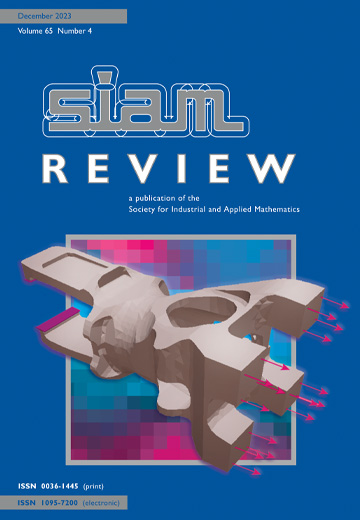Limits of Learning Dynamical Systems
IF 6.1
1区 数学
Q1 MATHEMATICS, APPLIED
引用次数: 0
Abstract
SIAM Review, Volume 67, Issue 1, Page 107-137, March 2025.Abstract.A dynamical system is a transformation of a phase space, and the transformation law is the primary means of defining as well as identifying the dynamical system and is the object of focus of many learning techniques. However, there are many secondary aspects of dynamical systems—invariant sets, the Koopman operator, and Markov approximations—that provide alternative objectives for learning techniques. Crucially, while many learning methods are focused on the transformation law, we find that forecast performance can depend on how well these other aspects of the dynamics are approximated. These different facets of a dynamical system correspond to objects in completely different spaces—namely, interpolation spaces, compact Hausdorff sets, unitary operators, and Markov operators, respectively. Thus, learning techniques targeting any of these four facets perform different kinds of approximations. We examine whether an approximation of any one of these aspects of the dynamics could lead to an approximation of another facet. Many connections and obstructions are brought to light in this analysis. Special focus is placed on methods of learning the primary feature—the dynamics law itself. The main question considered is the connection between learning this law and reconstructing the Koopman operator and the invariant set. The answers are tied to the ergodic and topological properties of the dynamics, and they reveal how these properties determine the limits of forecasting techniques.
学习动力系统的极限
SIAM评论,67卷,第1期,107-137页,2025年3月。摘要。动力系统是相空间的变换,而变换规律是定义和识别动力系统的主要手段,也是许多学习技术关注的对象。然而,动力系统的许多次要方面——不变集、库普曼算子和马尔可夫近似——为学习技术提供了替代目标。至关重要的是,虽然许多学习方法都集中在转换律上,但我们发现预测性能可能取决于动态的其他方面的近似程度。动力系统的这些不同方面分别对应于完全不同空间中的对象,即插值空间、紧致Hausdorff集、幺正算子和马尔可夫算子。因此,针对这四个方面中的任何一个的学习技术执行不同类型的近似。我们研究是否一个近似的任何这些方面的动力学可能导致近似的另一个方面。在这一分析中,许多联系和障碍被揭示出来。特别的重点放在学习主要特征的方法-动力学定律本身。所考虑的主要问题是学习这一定律与重构Koopman算子和不变集之间的联系。答案与动力学的遍历和拓扑特性有关,它们揭示了这些特性如何决定预测技术的局限性。
本文章由计算机程序翻译,如有差异,请以英文原文为准。
求助全文
约1分钟内获得全文
求助全文
来源期刊

SIAM Review
数学-应用数学
CiteScore
16.90
自引率
0.00%
发文量
50
期刊介绍:
Survey and Review feature papers that provide an integrative and current viewpoint on important topics in applied or computational mathematics and scientific computing. These papers aim to offer a comprehensive perspective on the subject matter.
Research Spotlights publish concise research papers in applied and computational mathematics that are of interest to a wide range of readers in SIAM Review. The papers in this section present innovative ideas that are clearly explained and motivated. They stand out from regular publications in specific SIAM journals due to their accessibility and potential for widespread and long-lasting influence.
 求助内容:
求助内容: 应助结果提醒方式:
应助结果提醒方式:


